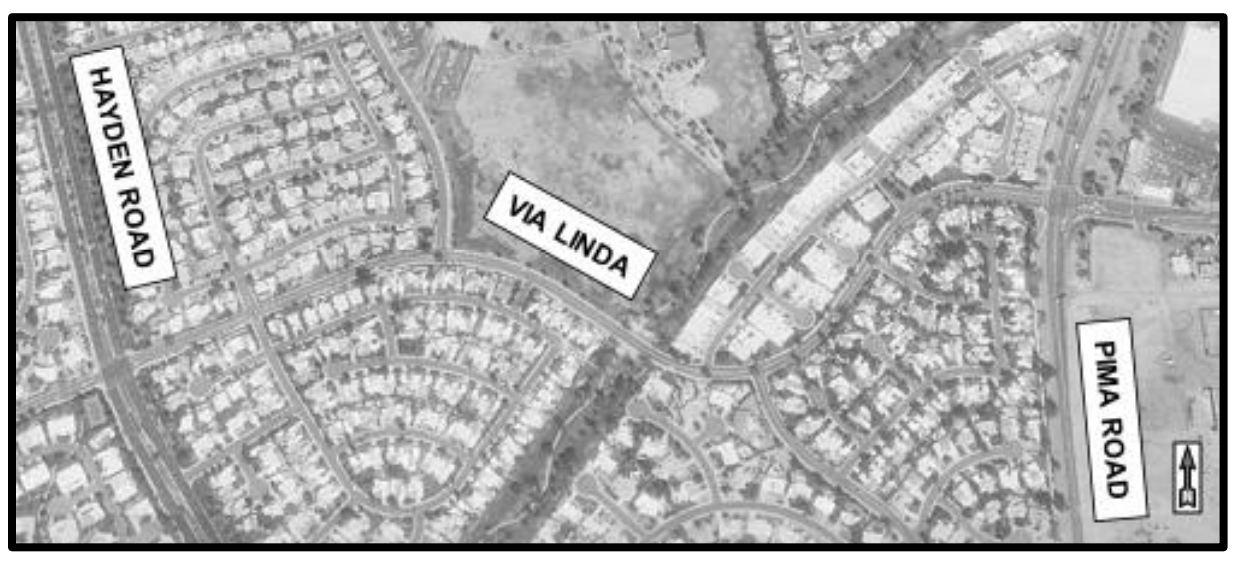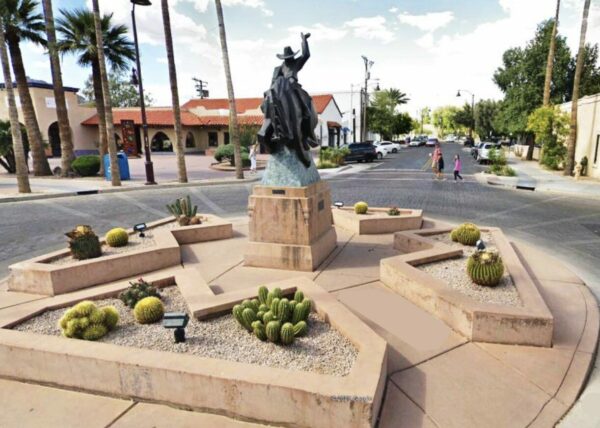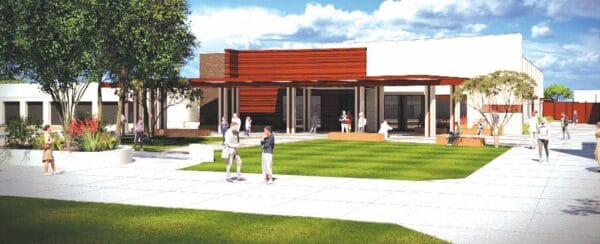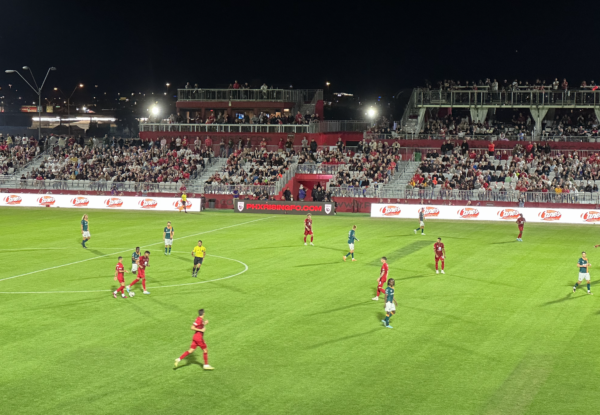By Paul Basha, traffic engineer, Summit Land Management
Read your columns crushing my hopes of four-way stops or 15 miles-per-hour speed limits to slow traffic near my home. Will you do the same with my dreams of traffic calming?
No. Traffic calming has been exceptionally successful in reducing travel speeds and traffic volumes on residential streets throughout the United States and Europe. Traffic calming devices in the United States first formally appeared with traffic circles in the 1970’s in Seattle and Portland. In the early 1980’s, speed humps appeared in Lancaster, California. Before-and-after speed measurements revealed people drove 5 to 15 miles-per-hour slower with speed humps.
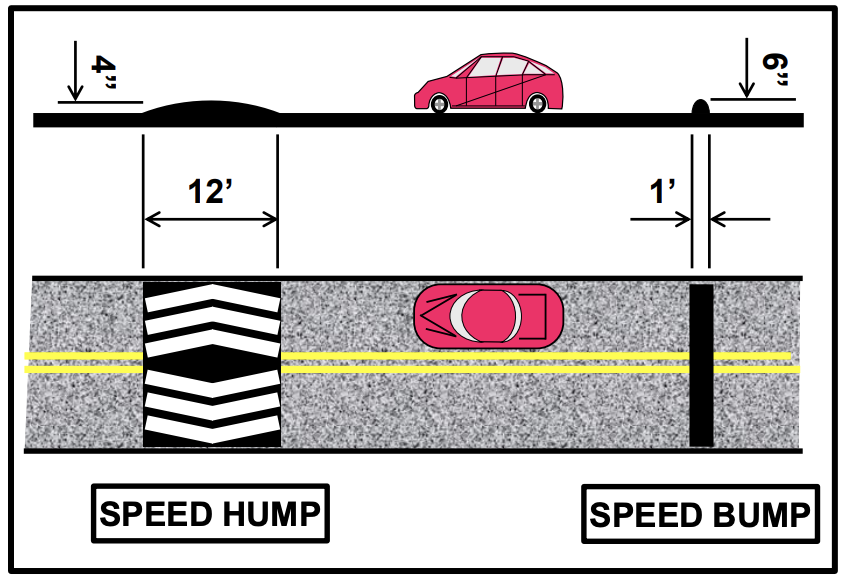
Speed humps are used on residential streets to reduce speeds to 15 miles-per-hour, different from speed bumps in commercial parking areas that force people to stop. Speed humps were
introduced in metropolitan Phoenix in the late 1980’s, and became increasingly common throughout the Valley in the 1990’s and 2000’s.
Initially speed humps were disdained by traffic engineers. We were taught to make streets efficient, as the prevailing wisdom was good traffic flow created the safest streets. One of the great truths of traffic engineering, and much of life, is that what is fabulous in some circumstances is dismal in other circumstances. Wide lanes, and gentle curves and hills are perfect for freeways, not so for residential streets. Most traffic engineers eventually accepted the realities that high design speeds create high travel speeds, and high speeds do not belong on residential streets.
Fire truck and ambulance drivers were very unhappy with speed humps. They live in a world where seconds determine life or death. Speed hump design evolved. Currently speed cushions are installed rather than speed humps. Speed cushions provide openings between speed bumps. These openings allow wide fire trucks and ambulances flat wheel paths to allow high speeds and short response times. Simultaneously, ordinary vehicles are narrower so they must travel with their right wheels flat and their left wheels raised, which results in lower travel speeds.
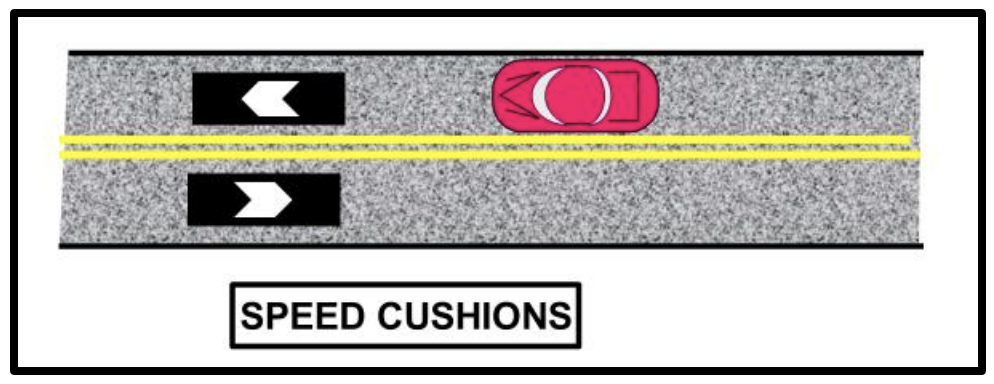
The first traffic calming devices in Scottsdale (perhaps the Valley) were not speed humps, they were traffic circles, installed in 1987 on Via Linda between Hayden Road and Pima Road.
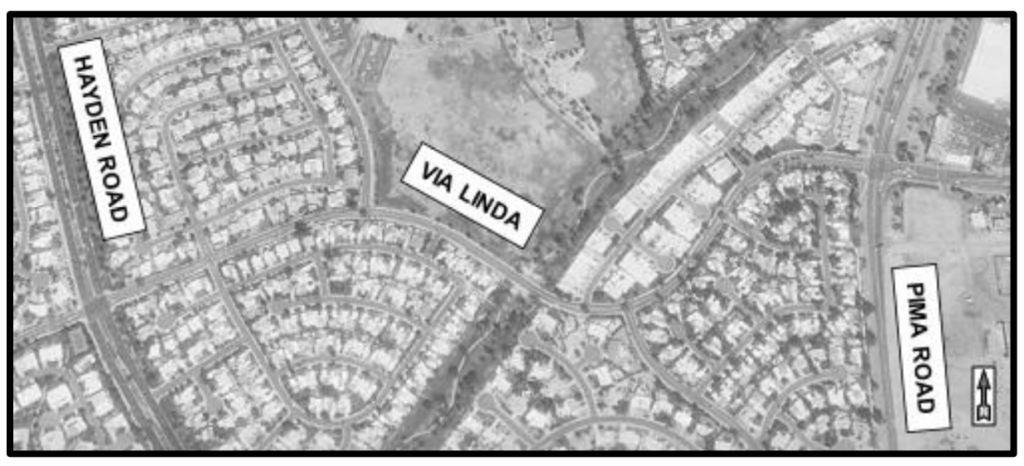
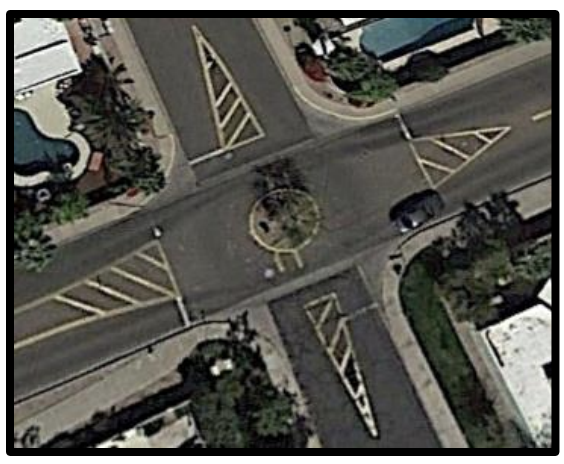
This was prior to the Pima Freeway. Hayden Road was the pride of the city, transporting more than 60,000 daily vehicles. Unfortunately, some of those vehicles came from Scottsdale Ranch and neighborhoods to its north and east, through the residential neighborhood of McCormick Ranch on Via Linda.
Five traffic circles were installed in three-quarter-mile to dramatically reduce travel speeds and divert traffic. Most effective, and ugly. Very controversial: the neighbors were most grateful, and through
drivers, not so much.
The Via Linda Traffic Circles were the topic of a few Scottsdale City Council meetings – several split votes. Sometimes the traffic engineers recommended their removal, sometimes their retention. More than 30 years later, they remain.
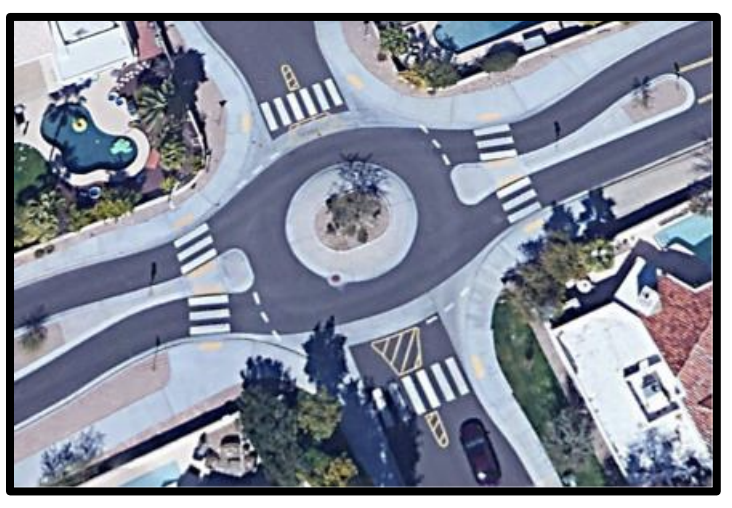
Fortunately in the summer of 2018, the Via Linda traffic circles were completely re-constructed. The initial traffic circles were curbs glued onto the pavement. The new traffic circles were combined with a pavement replacement project. They benefit from a complete intentional design, utilizing principals developed over the past 20 years. The approaches to the circles have angled and curbed median islands. Much more attractive and more effective at reducing speeds.
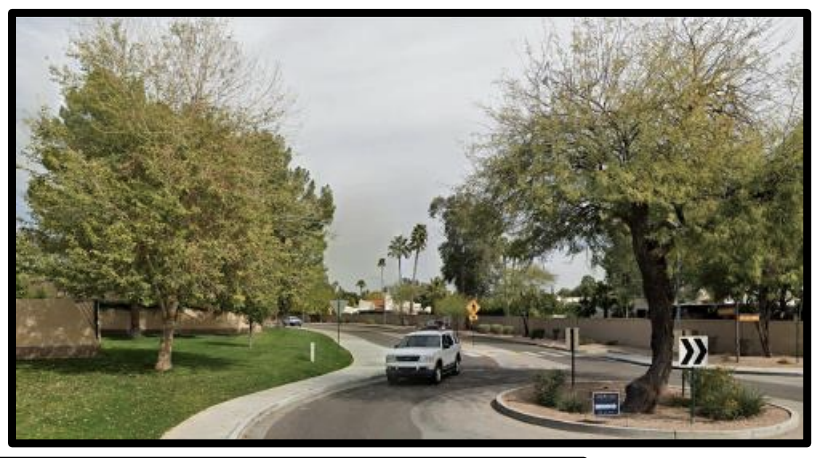
Generally, traffic calming has three varieties: vertical re alignment, horizontal realignment, and closures. In addition to speed humps and speed cushions, vertical realignments include raised intersections and raised crosswalks.
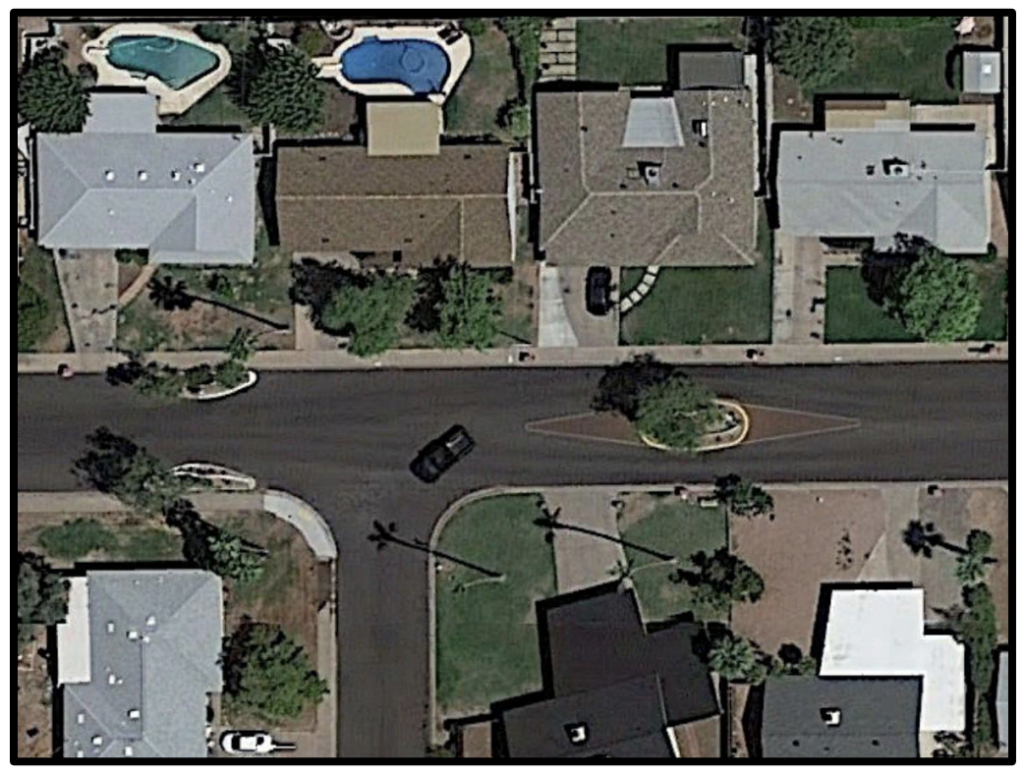
In addition to traffic circles, horizontal realignments include alternating side and center islands, intersection narrowing, and re-aligned intersections.
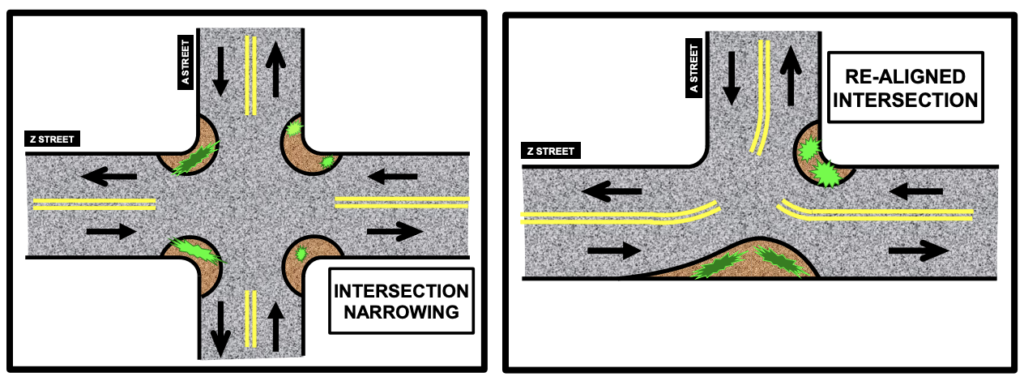
Curved streets can be particularly problematic on low-volume residential streets as people tend to use the entire roadway width in both directions for high-speed travel. Correctable by a simple curved median island.
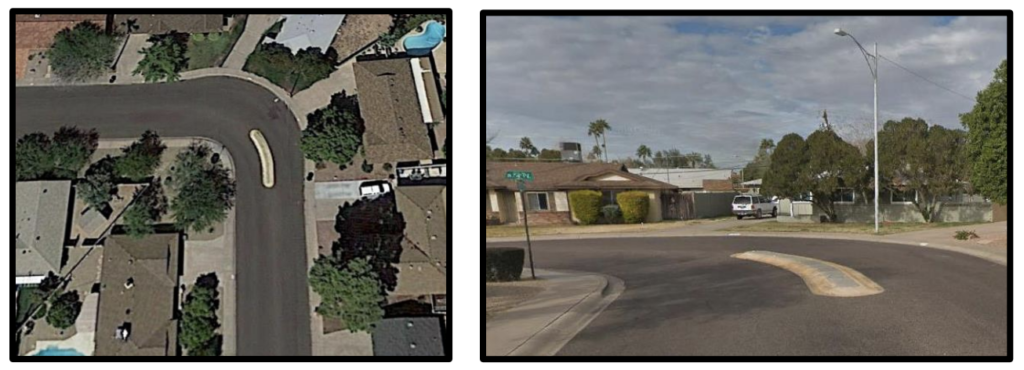
Horizontal and vertical re-alignments slow reasonable drivers – often we only need simple reminders to show courtesy. We’re all just sharing the planet attempting to realize our individual hopes and dreams.
Most of us stopped being teenagers shortly after finishing our first two decades of life. However, some of us respond to requests for mutual respect with impolite and uncivil resistance: mistakenly assuming we are exercising rugged individualism, independence, and freedom.
As we all have experienced, driving can bring out the worst in us. Too often, people who live in cul-de-sacs, or further away from the main street, or further up the hill; delight in proving their superiority and manhood to the people who live in the lower priced homes.
For this inappropriate behavior, more draconian measures are necessary. The most effective traffic calming is the most disruptive – funny how that works. Closures of one sort or another completely eliminate traffic. Unfortunately, both the people who live in the neighborhoods, as well as the people who drive through the neighborhoods, are prohibited from using the streets we jointly purchased.
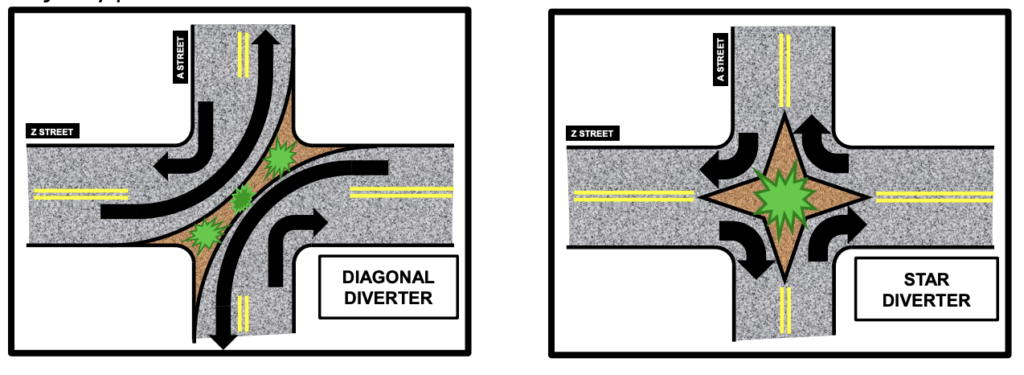
Complete or partial street closures increase traffic in other parts of the neighborhoods.
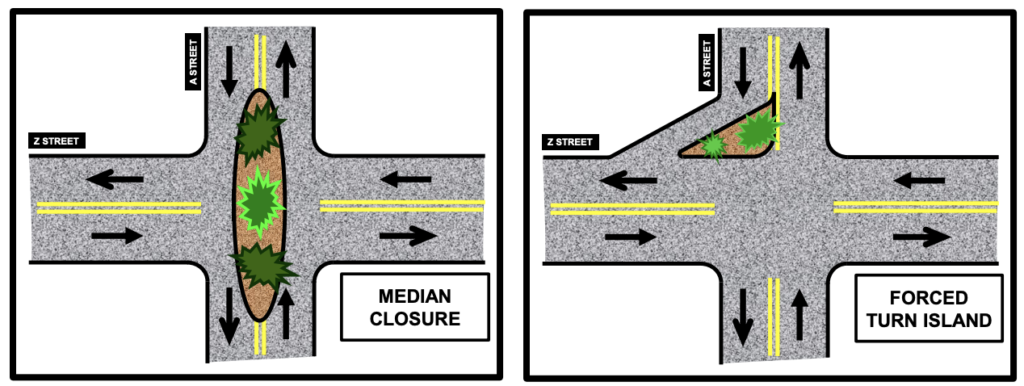
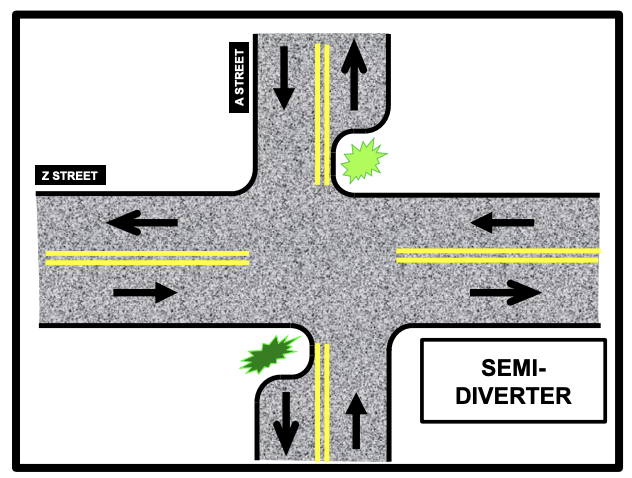
For these reasons, a very public process is usually necessary to determine which traffic calming is appropriate for the specific situation. Not all agree on the existence of a problem, or the degree of solution. Most public agencies require a petition process to ensure a majority of people who live in the neighborhood agree a problem exists.
Then public or e-mail meetings occur to discuss potential solutions and develop consensus on the most appropriate combination of devices. It is vital that the residents closest to the proposed traffic calming locations are accepting of the solution. They are the most affected byvthe speeding and they will be the most affected by the traffic restrictions. All who use the publicly funded streets are entitled to an opinion on how their taxes are spent. Numerous successful examples of enhancing neighborhoods through traffic calming abound throughout metropolitan Phoenix.
Almost always the public agency traffic engineers are well-versed in these topics and processes, and can provide excellent advice. Unfortunately, sometimes, facilitators with conflict resolution expertise are necessary.
First step to implement traffic calming, contact your local traffic engineering agency to discover their polices. Many of these policies have specific criteria and guidelines. Almost simultaneously, talk with your neighbors. Please do not expect a dictatorial referee to solve all of life’s problems. Cooperation and mutual respect yield the best results.
Curious about something traffic? Call or e-mail Paul at (480) 505-3931 and
pbasha@summitlandmgmt.com.

